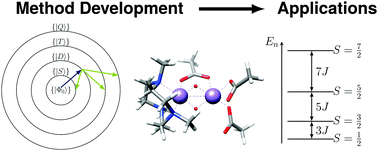Modern multireference methods and their application in transition metal chemistry
Abstract
Transition metal chemistry is a challenging playground for quantum chemical methods owing to the simultaneous presence of static and dynamic electron correlation effects in many systems. Wavefunction based multireference (MR) methods constitute a physically sound and systematically improvable Ansatz to deal with this complexity but suffer from some conceptual difficulties and high computational costs. The latter problem partially arises from the unfavorable scaling of the Full Configuration Interaction (Full-CI) problem which in the majority of MR methods is solved for a subset of the molecular orbital space, the so-called active space. In the last years multiple methods such as modern variants of selected CI, Full-CI Quantum Monte Carlo (FCIQMC) and the density matrix renormalization group (DMRG) have been developed that solve the Full-CI problem approximately for a fraction of the computational cost required by conventional techniques thereby significantly extending the range of applicability of modern MR methods. This perspective review outlines recent advancements in the field of MR electronic structure methods together with the resulting chances and challenges for theoretical studies in the field of transition metal chemistry. In light of its emerging importance a special focus is put on the selection of adequate active spaces and the concomitant development of numerous selection aides in recent years.

- This article is part of the themed collections: 2021 PCCP HOT Articles and PCCP Perspectives


 Please wait while we load your content...
Please wait while we load your content...